The BOSU is an effective tool for training both static and dynamic balance, as well as training motor skills, kinesthetic awareness and proprioception. When training on an unstable surface, the core automatically fires and contracts to keep the body upright. Thus, the BOSU challenges individuals to build strength and balance simultaneously. Beginning exercisers should have solid balance skills on the ground before using the BOSU ball.
You can manipulate balance exercises for your clients with the four primary BOSU balance challenge variables. These variables can be used separately or together to regress or progress an exercise, or to make the exercise different. The four variables are:
- Movement
- Eye gaze
- External stimulus (equipment, trainers touch, wall)
- Contact points (toes, hands, feet, knees)
With a single exercise, you can use tiny progressions to make clients feel more comfortable with the BOSU. This basic balance sequence provides progression tips to help you adapt the exercises to the fitness levels of your clients, and helps them build the foundation they need to pursue more challenging exercises. The sequence also includes a combination of static and dynamic balance to promote balance in transition, which helps build the foundation your clients need to be able to pursue more challenging exercises.
SHIN BALANCES
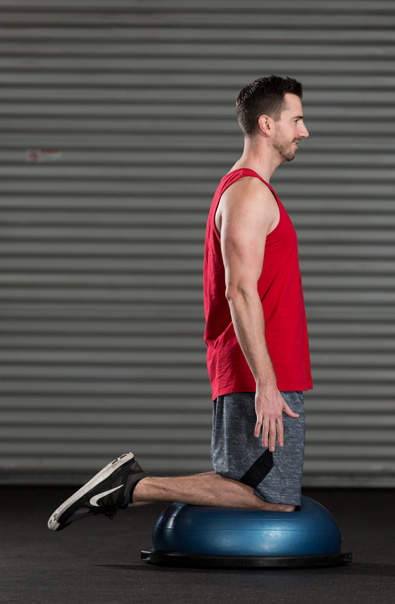
Position the client with shins on top of the BOSU with a neutral spine. Place the toes on the ground and keep hands in front of the shoulders; hold this position. To progress the exercise, lift the toes off the ground, close the eyes or catch a ball thrown by the trainer.
STATIC AWARENESS BALANCE
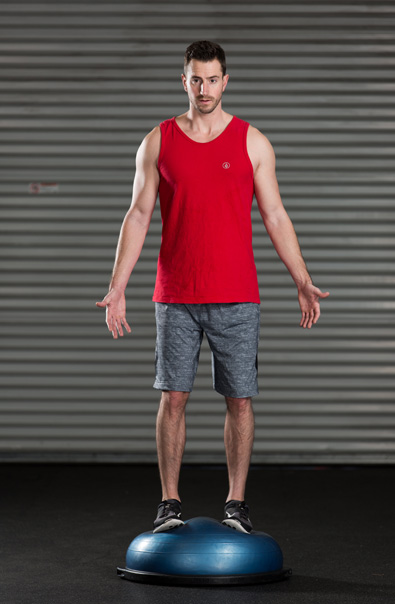
Position the client upright on the dome with the feet hip-distance apart, near the second and third ring on the dome. Place the hands by the sides with palms facing forward. Cue the client to focus on a focal point on the floor or wall directly ahead. Hold the position. The purpose is to bring awareness to the position, the unstable surface, the movement of the feet and ankles and the contraction of the core and breath. To progress the exercise, cue the clients to close one or both eyes.
ATHLETIC STANCE WITH HAND TRACKING

Position the client upright on the dome with the feet hip-distance apart, near the second and third ring on the dome. Position the body into a squat or an athletic stance. Place the hands in front of the face with bent elbows and palms facing forward. Begin to move the hands to the right and left, while allowing the torso and head to rotate with the movement. Track the hands with the eyes. To progress the exercise, keep the torso and head still while only moving the eyes.
STANDING ABDUCTION TOE TAPS
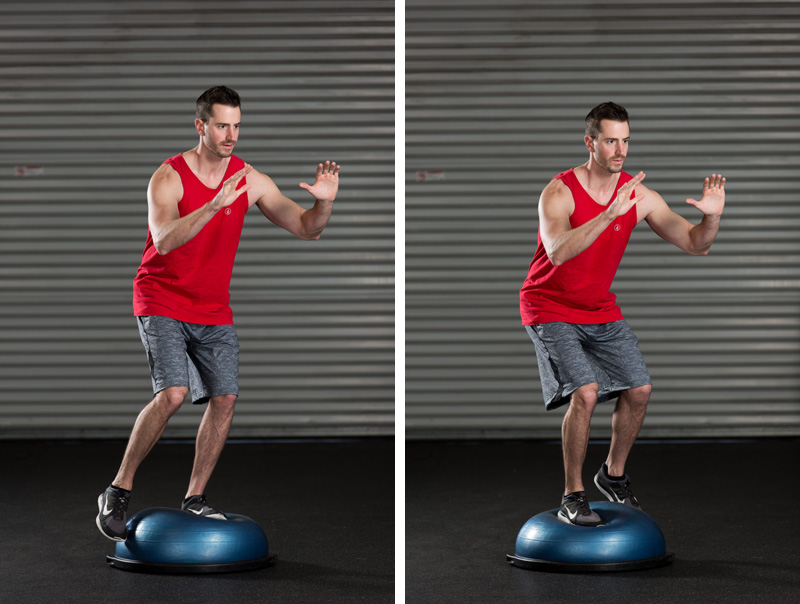
Position the client upright on the dome with the feet hip-distance apart, near the second and third ring on the dome. Place the arms into an athletic position in front of the body with a 90-degree bend at the elbows. Cue the client to lift the right foot off the dome and tap the foot on the side of the dome. Return to center and repeat with the left leg. To progress the exercise, place the foot on the floor next to the dome and lower the body into a slight squat position.
STATIC LUNGE
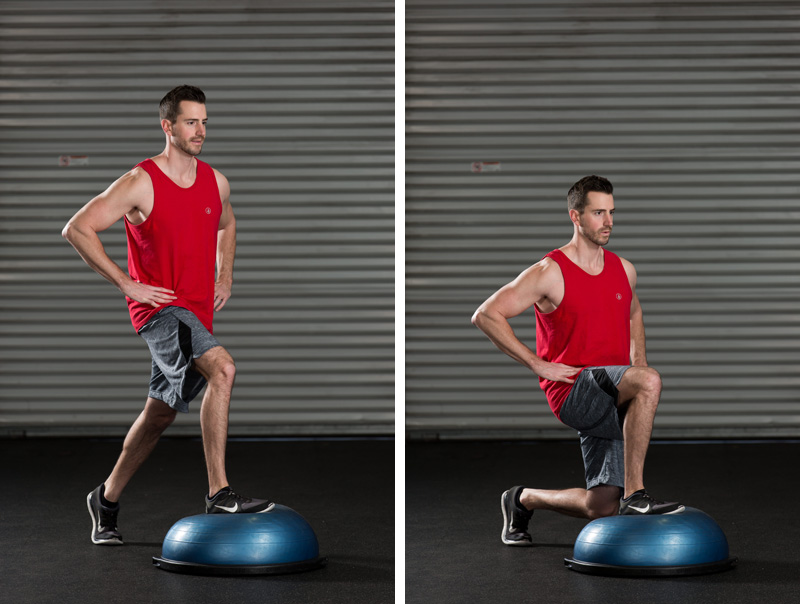
Position the client with the right foot on the dome. The arch of the foot should be on the center “bullet point.” Keep the hands on the hips or in front of the body with bent elbows. Lift the heel of the left foot and lower the left knee into a lunge position. Complete a set on the left leg and then switch to the right.
WALK UPS
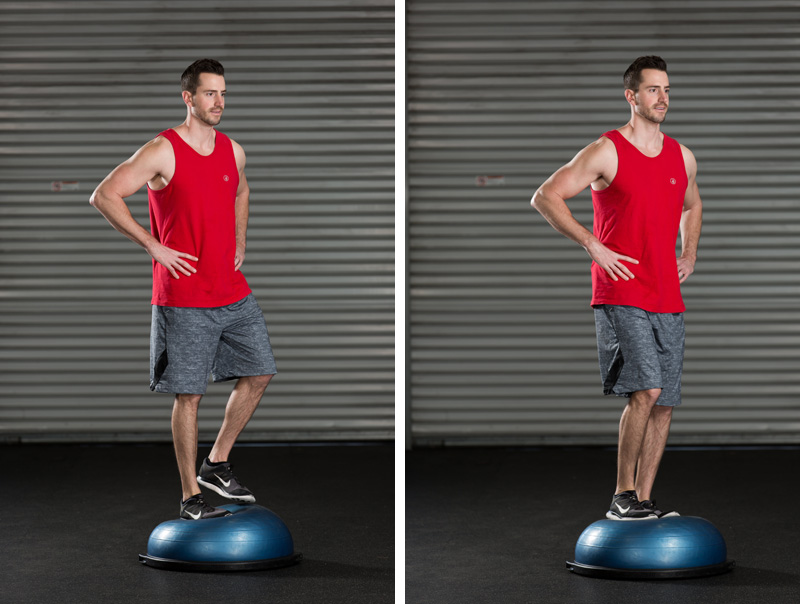
In a repetitious manner, cue the client to walk up and down on the dome. Clients can lead with one foot for a certain length of time or alternate the feet. The client can use a body bar or wall to assist with balance. To progress the exercise, cue the client to perform step-ups where only one foot is on the dome instead of two.
LATERAL WALK OVERS

Have the client stand next to the dome. Cue the client to walk the right foot on top, followed the left, and to exit the dome on the other side. Continue walking up and over the dome. This exercise trains for lateral shuffles, which is the progression.
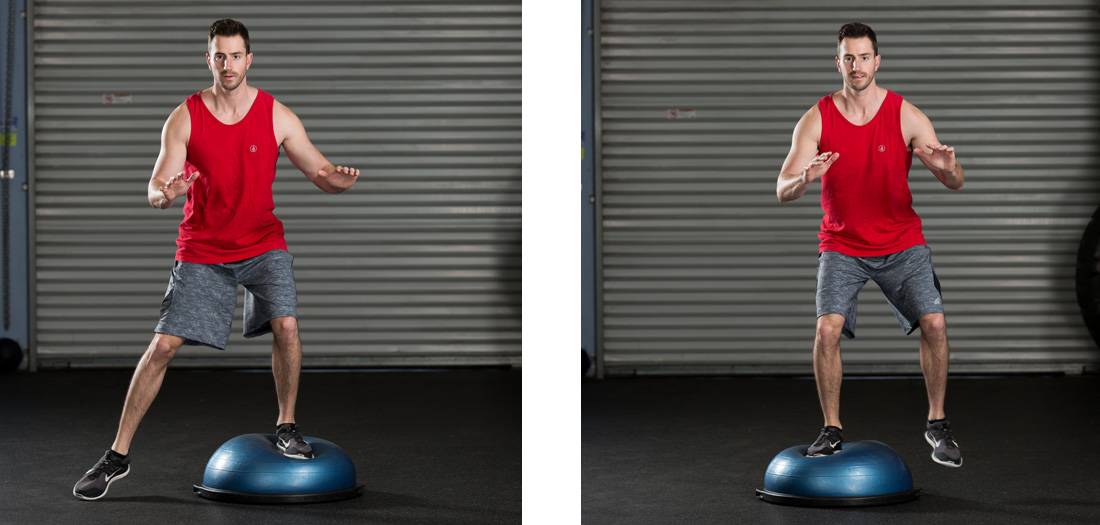

Комментариев нет:
Отправить комментарий